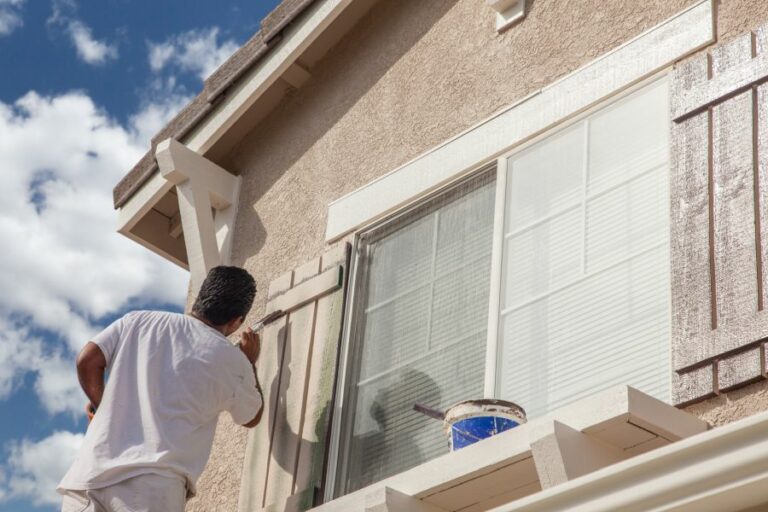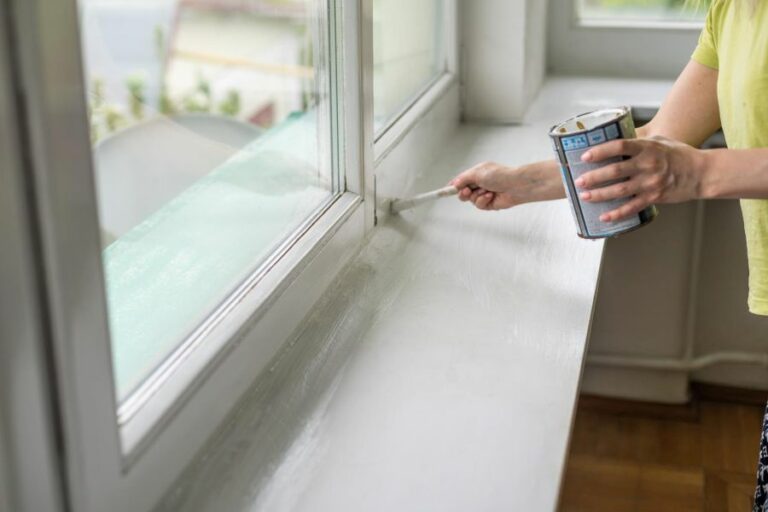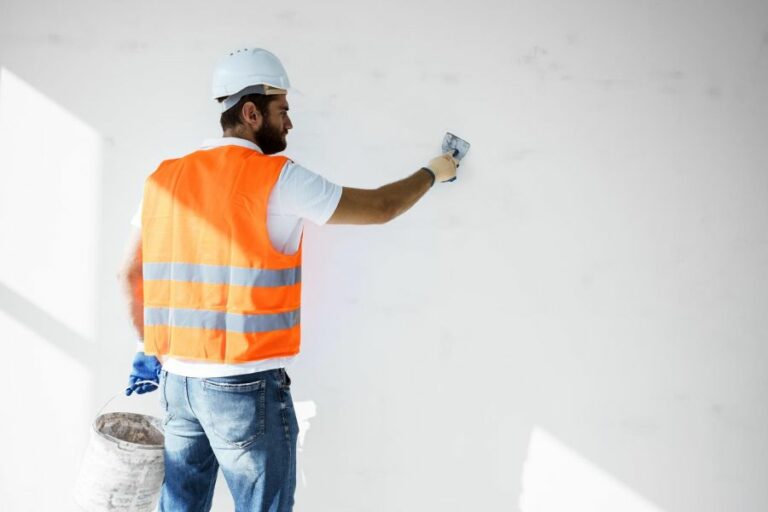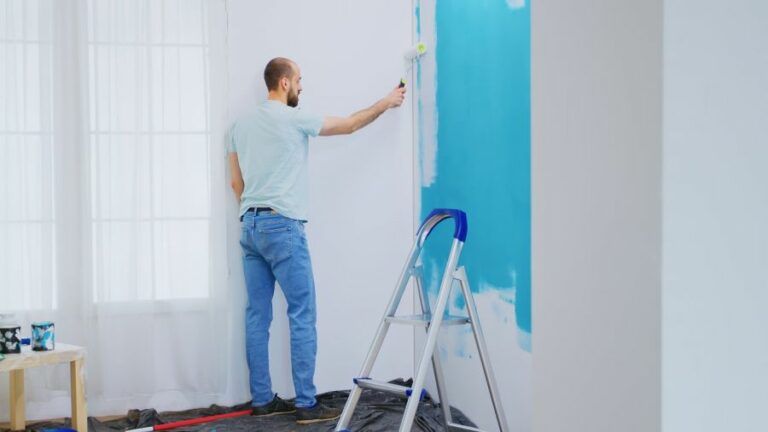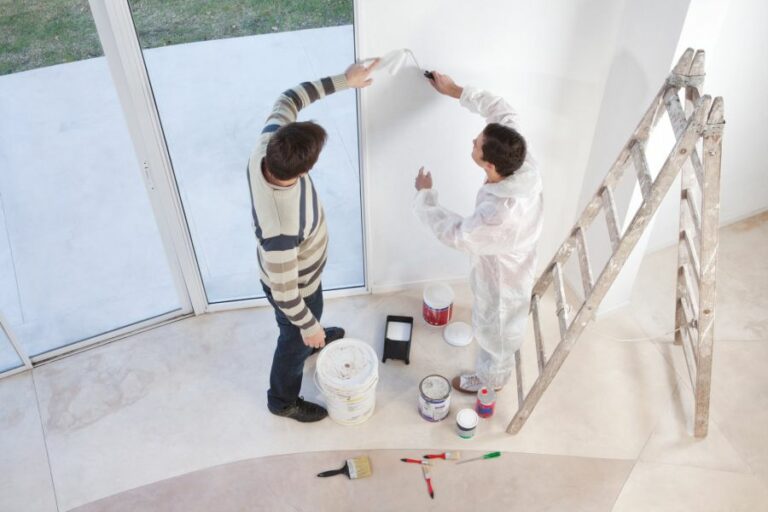Key Equipment For Successful Surface Prep, What Pros Say
Proper surface preparation is crucial When achieving a flawless, professional finish in any painting, coating, or refinishing project. Having the right tools and equipment can streamline the process and increase overall efficiency, ensuring you always attain that perfect result.
Key equipment for successful surface prep:
Key equipment for successful surface preparation includes abrasive blasters, grinders and polishers, scarifiers, floor strippers, and pressure washers. These tools help remove impurities, smooth surfaces, and strip old coatings, ensuring a properly prepared surface for further processing or finishing.

Discover the essential tools and equipment needed for impeccable surface preparation to achieve professional results. Read on to unveil crucial insights that can simplify your prep work and enhance the durability and appearance of your projects!
Contents
- 1 Essential Tools for Effective Surface Preparation
- 2 Surface Preparation Equipment: What’s Used?
- 3 Key Steps in the Surface Preparation Process
- 4 Surface Prep Tools & Equipment for Ships
- 5 Most Popular Surface Preparation Method
Essential Tools for Effective Surface Preparation
Surface preparation is crucial for many construction and remodeling projects. In order to achieve the desired finished results, the groundwork must be properly and meticulously prepared.
• Abrasive Blasters
Abrasive blasting is a surface preparation method that involves the use of a high-pressure stream of abrasive material to remove impurities and contaminants from a surface. This process is commonly used for cleaning, smoothing, and roughening surfaces in preparation for coating or painting.
Some popular abrasive blasting methods include sandblasting, shot blasting, and bead blasting. The type of equipment needed for abrasive blasting varies based on the specific method being used but typically includes an air compressor, blast pot, blast hose, and nozzle.
• Grinders and Polishers
Grinders and polishers are versatile tools for both surface preparation and finishing. They are typically used to smooth and level surfaces or to remove old coatings and finishes.
Grinders are equipped with diamond-impregnated grinding discs, which can be of varying grits to achieve the desired level of smoothness. Polishers use polishing pads and compounds to create a high-gloss finish on surfaces.
Essential equipment for grinding and polishing includes a grinder or polisher machine, diamond grinding discs or polishing pads, a dust shroud or vacuum attachment, and safety gear such as gloves, goggles, and a respirator.
• Scarifiers
Scarifiers, also known as surface planers or milling machines, are used for heavy-duty surface preparation tasks. These machines use rotating cutting tools to remove layers of material, such as concrete, asphalt, or coatings, from a surface.
Scarifiers are commonly used for tasks like removing rust or scaling from metal, removing old paint or coatings from walls, and leveling and texturing concrete surfaces.
Key equipment for scarifying includes the scarifier machine itself, appropriate cutting or milling accessories (such as carbide, steel, or diamond-tipped cutters), and safety gear like gloves, goggles, and a respirator.
• Floor Strippers
Floor strippers are used to remove various types of flooring materials, such as carpet, tile, linoleum, or epoxy coatings.
These machines use blades or cutting attachments to break the bond between the flooring material and the substrate, allowing for easy removal. Floor strippers can be manual or mechanized, depending on the size and scope of the project.
For a successful floor stripping project, you will need a floor stripper machine, an appropriate blade or cutting attachment, a scraper or pry bar for manual removal, and safety gear such as gloves, goggles, and knee pads.
• Pressure Washers
Pressure washers are an indispensable tool for surface preparation, as they can quickly and effectively remove dirt, grime, and loose debris from a variety of surfaces, including concrete, wood, metal, and masonry.
They use a high-pressure jet of water and often include cleaning solutions or detergents for a more thorough cleaning.
Pressure washers come in multiple sizes and pressure ratings, so it’s important to choose the appropriate equipment for your project.
To use a pressure washer effectively, you will need the washer itself, appropriate nozzles and attachments for the specific surface being cleaned, and proper personal protective equipment, such as gloves, goggles, and waterproof clothing.
• Final Thoughts on Surface Prep Equipment
Investing in the right equipment for surface preparation is essential to achieving professional and long-lasting results. The above-mentioned tools and equipment are crucial to properly preparing surfaces for further processing or finishing, ensuring that the final result is up to industry standards.
Remember, always follow the manufacturer’s recommendations for the proper use and maintenance of your equipment.
Additionally, use appropriate safety gear and precautions to protect yourself and those around you. With careful attention to detail and the right equipment, your surface preparation projects will be a success.
Surface Preparation Equipment: What’s Used?
Surface preparation is a critical step in many construction and maintenance projects. It ensures that the surface is clean, free of contaminants, and ready for the application of coatings, adhesives, or other treatments.
• Mechanical Surface Preparation Equipment
– Shot Blasting Machines
Shot blasting is a process that uses high-speed blasts of steel shot or beads to clean and profile surfaces. It is an efficient and environmentally friendly method that is suitable for various surfaces such as concrete, steel, and asphalt.
There are two main types of shot-blasting machines – walk-behind and ride-on models.
- Walk-behind shot blasters are pushed along by an operator and are typically used for smaller projects or in tight spaces.
- Ride-on shot blasters, on the other hand, are larger and driven by an operator, making them ideal for bigger surface preparation projects.
Both types yield effective results, but it is essential to choose the proper blast media and machine settings for the specific surface being treated.
– Grinding Machines
Grinding machines use abrasive disks to grind down surfaces and remove contaminants. There are several types of grinding machines, including angle grinders, floor grinders, and handheld grinders.
These machines can be used to smooth rough surfaces, remove adhesives, and correct surface imperfections, such as uneven areas.
For the best results, it is crucial to select the appropriate grinding disk according to the material of the surface and the desired finish.
– Scarifying Machines
Scarifying machines use rotating cutting tools to remove a thin layer of material from a surface. This process is effective for removing contaminants, such as paint, epoxy, or rust, and creating a rough surface profile.
These machines come in various sizes and can be used on a wide range of surfaces, from concrete to metal. When using a scarifier, it is essential to adjust the machine settings according to the hardness of the material so as not to over- or under-scarify the surface.
– Sandblasting Equipment
Sandblasting, also known as abrasive blasting, projects an abrasive material at high velocity to remove contaminants and create a smooth or textured surface. There are several types of sandblasting equipment available, including pressure blasters, suction blasters, and wet blasters.
The choice of machine and abrasive material generally depends on the project specifications and the desired outcome of the surface preparation.
For those concerned about the environmental impact, EcoQuip equipment offers a vapor-abrasive blasting method, combining water and abrasive materials to create a dustless environment.
• Chemical Surface Preparation Methods
– Chemical Strippers
Chemical strippers are used to remove paint, coatings, and adhesives from surfaces by breaking down their chemical bonds. These products come in various forms, such as gels, liquids, or aerosol sprays, and require careful application to achieve the desired results.
It is vital to wear proper protective equipment, such as gloves and goggles when working with chemical strippers, as they can be hazardous to one’s health.
– Acid Etching
Acid etching is a chemical process using acidic solutions, such as muriatic or phosphoric acid, to create a roughened surface profile on concrete or metal surfaces. This method can effectively remove surface contaminants and establish better adhesion for coatings or overlays.
However, following the acid etching process, it is essential to follow proper safety protocols and neutralize the surface to prevent future damage.
• Considerations for Selecting Surface Preparation Equipment
When selecting equipment for surface preparation, several factors should be considered to ensure the most effective and efficient results. These factors include:
- The size and scope of the project
- The type of surface material (concrete, steel, asphalt, etc.)
- The level of contamination or the type of coating to be removed
- The desired surface profile or finish
- Environmental and safety concerns
Additionally, it is important to follow the manufacturer’s recommendations and consult with surface preparation experts to select the best equipment and techniques for each project.
By choosing the right equipment and approach, surface preparation processes can be completed efficiently, with optimal results for the application of new coatings, adhesives, or treatments.
Key Steps in the Surface Preparation Process
Surface preparation is a critical step in many processes, including painting, coating, and adhesive bonding. Proper surface preparation ensures the longevity and durability of the final product while also enhancing its appearance.
• Assessing the Surface Condition
Before starting the surface preparation process, it is important to carefully assess the condition of the surface to determine the appropriate method and materials. Examine the surface for any signs of damage, such as cracks, holes, or corrosion.
Additionally, look for any contaminants that may be present, such as grease, oil, dirt, or foreign materials. If any of these issues are present, they will need to be addressed before proceeding with the surface preparation.
• Cleaning the Surface
After assessing the surface condition, the first step in the process is to clean the surface thoroughly. It is essential to remove all surface contaminants, as these can significantly impact the final outcome. Different cleaning methods may be used depending on the type and level of contaminants present, such as:
- Degreasing: If the surface is contaminated with grease or oil, it should be degreased using an appropriate cleaner. This can be done using solvents or by using detergent-based cleaners followed by rinsing with clean water.
- Dusting: For lightly soiled surfaces, dusting or wiping with a clean cloth can be effective in removing dirt and debris.
- Pressure Washing: In some cases, using high-pressure water may be necessary to remove stubborn dirt and contaminants.
For more information on cleaning techniques for different surface types, the Environmental Protection Agency (EPA) provides a useful guide on recommended cleaning methods.
• Abrading the Surface
Once the surface is clean, it may be necessary to abrade the surface to create a suitable profile for the subsequent coating, paint, or adhesive.
Abrading the surface can help to remove any residual contaminants, as well as promote better adhesion by providing a roughened surface for the material to bond to. Common methods of surface abrasion include:
- Sanding: Sandpaper or abrasive pads can be used to lightly abrade smooth surfaces, such as wood or metal. Select the appropriate grade of sandpaper based on the desired surface profile and finish.
- Blasting: For heavier surface preparation, sandblasting or abrasive blasting may be necessary. This process involves propelling abrasive materials onto the surface at high speeds, effectively removing heavy rust, mill scale, or old coatings.
- Etching: Chemical etching can be used on certain surface types, such as concrete or masonry, to create a rough surface profile. This involves applying a chemical solution to the surface, which reacts with the material to create a roughened texture.
• Repairing Surface Defects
If any surface defects, such as cracks, holes, or damage, are present on the surface, they should be repaired before proceeding with the application of any coatings or adhesives. Depending on the type of defect and surface material, different repair techniques may be used:
- Patching: For small holes and irregularities, patching compounds or fillers can be applied and then sanded smooth once dry.
- Welding: For metal surfaces, welding may be necessary to repair larger areas of damage or to fill gaps.
- Sealing: If cracks are present in concrete or masonry surfaces, they should be sealed using a suitable crack repair product and allowed to cure according to the manufacturer’s recommendations.
• Applying a Primer
After the surface has been cleaned, abraded, and repaired, it is generally recommended to apply a primer or undercoat.
Primers help to provide a uniform, sealed surface that promotes better adhesion for the subsequent coating or paint, as well as offering improved corrosion protection for metal surfaces.
Select a primer that is compatible with both the surface material and the intended topcoat. Follow the manufacturer’s recommendations for application techniques, coverage rates, and drying times to ensure optimal results.
• Final Inspection and Quality Control
Before applying the final coating, paint, or adhesive, it is essential to perform a final inspection of the prepared surface.
Ensure that the surface is clean, dry, and free from any defects or contaminants. Verify that the primer has been applied correctly and is fully cured.
In conclusion, proper surface preparation is essential to the success of any application, and following these steps will help to ensure a durable, long-lasting, and visually appealing result.
By carefully assessing the surface condition, cleaning and abrading as necessary, repairing any defects, and applying a primer, you can achieve a surface that is ready for the final application with confidence in the quality of the finished product.
Surface Prep Tools & Equipment for Ships
Surface preparation is a critical aspect of maintaining the aesthetic and functional integrity of a ship. Properly preparing the surface ensures the long-lasting performance of new paint, coating, and repair jobs.
• Mechanical Surface Preparation Equipment
– Hand Tools
Hand tools, such as scrapers, wire brushes, and sanders, are commonly used for surface preparation on ships. These tools are highly portable and facilitate the removal of old paint, rust, and other debris from surfaces.
Scrapers
Scrapers are an essential tool for any surface preparation task. They are highly efficient at removing loose and flaking paint, rust, and other contaminants from surfaces. It’s essential to be cautious not to damage the underlying substrate when using a scraper.
Wire Brushes
Wire brushes are an essential surface preparation tool frequently used for removing rust and other contaminants from surfaces. Different types of wire brushes are available, such as hand wire brushes and power-operated wire brushes.
Hand wire brushes are suitable for small-scale tasks, while power-operated wire brushes are employed for larger surface areas.
Sanders
Sanders facilitate the smooth finishing of surfaces. They are available in various configurations, including vibratory sanders, orbital sanders, and belt sanders. Selecting the appropriate sander depends on the nature of the job at hand and the size of the area to be covered.
– Blast Cleaning
Blast cleaning is an effective method for removing paint, rust, and other contaminants from surfaces. Grit blasting and shot blasting are two common forms of blast cleaning.
Grit Blasting
Grit blasting propels abrasive particles onto the surface, effectively removing contaminants through the force of impact.
Various types of grit material are available, such as aluminum oxide, glass beads, and steel grit. The selection of the appropriate grit material depends on the surface and the required finish.
Shot Blasting
Shot blasting is similar to grit blasting but involves the use of steel shot or metal pellets instead of abrasive particles. This method is highly efficient in removing rust and old paint from surfaces, making it ideal for large-scale surface preparation tasks.
• Chemical Surface Preparation Techniques
Chemical surface preparation techniques involve the use of chemicals possessing the ability to dissolve or loosen surface contaminants.
The choice of a chemical depends on the nature of the contaminants and the compatibility of the chemical with the surface material.
– Solvents
Solvents effectively dissolve contaminants such as grease, oil, and dirt, preventing them from interfering with subsequent coats of paint or other surface treatments. Common solvents include acetone, alcohol, and mineral spirits.
– Paint and Rust Removers
Paint and rust removers are chemical solutions specifically formulated to remove paint and rust from surfaces.
The effectiveness of these products depends on the concentration of active ingredients and the dwell time of the product on the surface.
– Acid Pickling
Acid pickling is a highly effective method of removing rust and scale from surfaces using acid-based solutions. This technique is popular for preparing metal surfaces before painting or coating.
However, proper personal protective equipment (PPE) is essential when using this method due to the corrosive nature of the chemicals involved.
• Surface Preparation Equipment Maintenance
The longevity and effectiveness of surface preparation equipment depend on proper maintenance. Regular cleaning, lubrication, and monitoring of wear and tear are essential to ensure the optimum performance of these tools.
– Cleaning
Regular cleaning of surface preparation equipment prevents the buildup of contaminants that can hinder tool performance.
Some cleaning methods include wiping down surfaces with a clean cloth, brushing off loose particles, and using compressed air to clean dust and debris from hard-to-reach areas.
– Lubrication
Proper lubrication reduces friction between moving tool parts, reducing the wear rate and extending the lifespan of the equipment. Lubrication also lowers the operating temperature of the tool, preventing overheating.
– Monitoring Wear and Tear
Regularly inspect surface preparation equipment for signs of wear and tear, replacing damaged or worn-out components as needed. This proactive approach can prevent equipment failure and ensure the top performance of the tools.
• Conclusion
Surface preparation is a vital aspect of maintaining ships’ appearance and structural integrity. Employing the appropriate tools and equipment for surface preparation tasks ensures the efficient removal of contaminants and facilitates the application of new paint, coatings, and other surface treatments.
By understanding the various tools, equipment, and techniques available for surface preparation and maintaining them in good working order, optimal results can be achieved in maintaining shipboard surfaces.
Most Popular Surface Preparation Method
Surface preparation is a crucial step in both industrial and construction processes, as it significantly affects the quality and longevity of the final coating or bond.
Among the numerous techniques available for surface preparation, abrasive blasting stands out as the most common and versatile method.
• Abrasive Blasting: An Overview
A technique of forcibly propelling abrasive particles against a surface, abrasive blasting serves to clean and roughen surfaces in preparation for painting, coating, or bonding.
The primary objective of abrasive blasting is to improve adhesion by increasing the surface area and removing surface contaminants such as rust, dirt, grease, or previous coatings.
Abrasive blasting finds use in diverse industries, including:
- Automotive: Surface preparation for vehicle restoration or paint removal
- Marine: Maintenance of ship hulls, decks, and other components
- Oil and gas: Cleaning of storage tanks and pipelines
- Construction: Surface preparation for concrete repair or reinforcement
• Types of Abrasive Blasting Techniques
There are several abrasive blasting techniques, each with specific applications and advantages. The most common methods include:
1. Dry Abrasive Blasting
Dry abrasive blasting, also called sandblasting, uses compressed air to propel abrasive particles at high velocity to clean or texturize surfaces.
Advantages:
- Speed: Dry blasting is fast, making it suitable for large projects
- Versatility: A wide range of abrasive materials can be used
- Precision: The blasting pressure and abrasive type can be adjusted for varying surface requirements
Disadvantages:
- Health risks: Fine dust particles pose respiratory hazards to operators
- Environmental impact: Dry blasting generates significant dust and waste
- Surface damage: The high-pressure impact may cause surface damage, requiring additional steps
2. Wet Abrasive Blasting
Wet abrasive blasting combines water and abrasive particles to create a slurry, which is then propelled at the surface.
Advantages:
- Reduced dust: The water in the slurry captures airborne particles, reducing dust generation by up to 90%
- Lower impact: The wet blasting process is less aggressive, resulting in minimal surface damage
- No heat: Reduced friction from water eliminates the risk of overheating or warping the surface
Disadvantages:
- Slower: Wet blasting is typically slower than dry blasting
- Cleanup: The water and abrasive slurry require careful disposal and can be messy to clean up
3. Vapor Abrasive Blasting
Vapor abrasive blasting, a variant of wet blasting, uses water vapor and abrasive particles to clean surfaces, thereby considerably reducing dust generation.
Advantages:
- Dust suppression: Vapor blasting minimizes dust production, leading to safer working conditions
- Lower water consumption: The process requires less water compared to traditional wet blasting
- Surface preservation: Vapor blasting is gentle on surfaces and preserves the substrate integrity
Disadvantages:
- Equipment cost: Vapor blasting equipment can be more expensive compared to other techniques
- Waste disposal: The wastewater generated must be disposed of properly
• Recommendations for Best Practices in Abrasive Blasting
As a professional involved in abrasive blasting projects, I recommend the following best practices to achieve optimal results:
- Select the appropriate abrasive material and technique: Consider factors such as surface type, material, project size, and environmental concerns when selecting the most suitable abrasive blasting method and material.
- Employ safety precautions: Proper protective equipment, such as respirators and blast suits, should be used to minimize health risks to operators.
- Monitor environmental impact: Implement dust control measures and proper waste disposal protocols to minimize environmental harm.
- Inspect surfaces pre- and post-blast: Assessing the surface before and after blasting will ensure all contaminants have been removed, and the desired surface profile has been achieved.
- Adhere to industry standards: Follow industry guidelines, such as the Society for Protective Coatings (SSPC) and the National Association of Corrosion Engineers (NACE) for surface preparation to ensure a quality project outcome.
• Conclusion
Abrasive blasting, including dry, wet, and vapor blasting techniques, remains the most common and versatile method for effective surface preparation. Industries such as automotive, marine, oil and gas, and construction rely on abrasive blasting to improve adhesion and maintain surface integrity.
By understanding the various techniques, applications, advantages, and disadvantages, professionals can select the most appropriate method for their specific needs, ensuring successful outcomes while minimizing environmental and health impacts.
Technique | Description |
|---|---|
Solvent Cleaning | Removal of contaminants such as grease, oil, or dirt using a solvent or detergent. |
Hand Tool Cleaning | Removal of loose rust, mill scale, and paint by hand scraping, wire brushing, or other means. |
Power Tool Cleaning | Use of electric or pneumatic tools to remove loose rust, mill scale, and paint. |
Abrasive Blasting | High-velocity impact of abrasive materials such as sand, slag, or steel shot to clean and roughen a surface. |
Water Blasting | High-velocity impact of water to clean surfaces without damaging the substrate. |
Chemical Etching | Application of a chemical solution to remove contaminants and create a rough surface. |

